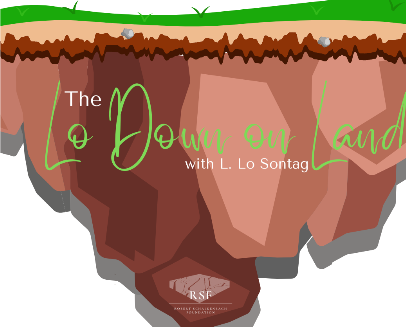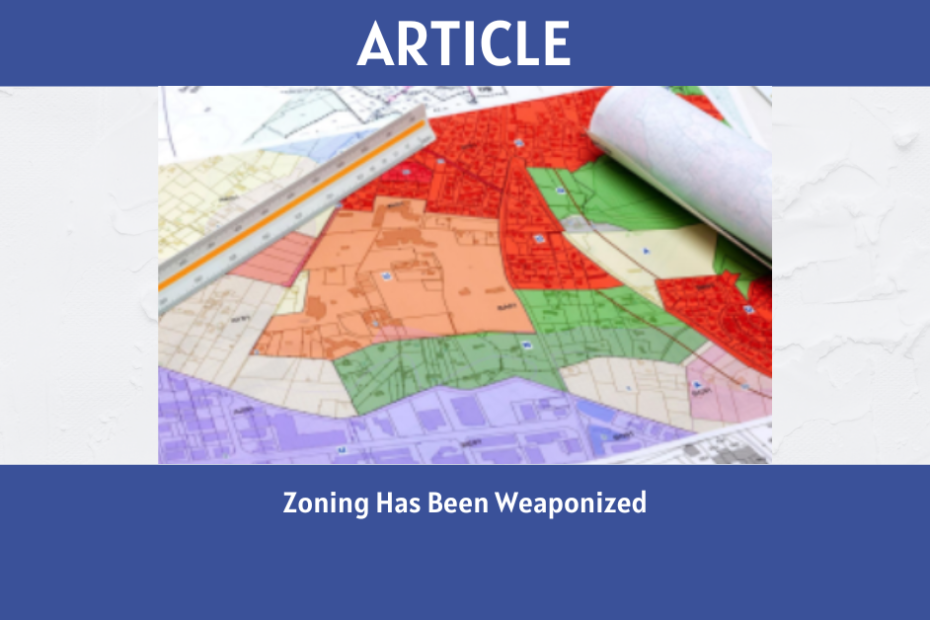
Low-density housing typically refers to residential areas occupied primarily by single-family homes or buildings with a limited number of dwellings. There is no set definition, but one characteristic of such an area is that the inhabitants start complaining about any housing development that is too tall with too many units.
“What about our schools?!” “What about MY parking?!” “Intruders!” Such are the phrases often grumbled, uttered, or shouted.
This low-density housing came into existence for many reasons and is structured to keep others (read “non-white,”) out.
High density in housing was viewed as a facilitator of worker organizing and left politics. The local laws that limit the number of unrelated and unmarried adults who can live in a home aren’t because of Jesus. It is because of Marx. Anti-density, also known as exclusionary zoning (Pendall, 2019), was created to separate poor and working-class white people from rich white people. And later, to separate white workers from each
other. But there is another reason exclusionary zone policies continue to persist. It is a very effective tool for racial segregation, which acts synergistically to disempower both white and non-white working-class people.
The idea that high density is a superior tool for racial equity than is low density seems to go against what we have been taught. But it brings people together in their living spaces, their schools, at work, and in commerce. White people realize what they have in common as opposed to seeing non-white workers as “The Other.” But because actual socialism has been actively thwarted––even in so-called “socialist” and “communist” countries, we have no demonstration cases of how it could work; and this is also the case with economically and racially diverse high-density housing.
To achieve the goal, as summarized by Offspring’s lyric “you got to keep ‘them separated,” high density is often characterized as an apocalyptic nightmare. It is where the unwashed hordes will murder you on a busy street, despite the fact that being murdered on the street typically occurs when very few are watching. Thus, we need to retreat to our own personal castle with a big lawn, so we can be safe. Safety is single, nuclear “family-ness,” with solitude, a garage, a metal object with four wheels that goes fast.
The wealthy don’t like the idea of large masses of people of various races––different working-class backgrounds with a multitude of histories thriving and sharing together in community. So they pay to help you envision their perspective. Corporate TV shows, movies, and books have painted people in urban life as scary, lethal, trashy, and usually Black. Escape from New York, Soylent Green, The Warriors, Falling Down, Dirty Harry, all of the post-1960s Batman movies, Mad Max, Running Man, Blade Runner, Judge Dredd, and Taxi Driver repeat this fiction. In Taxi Driver we get the succinct view of this terrible weltanschauung through misanthrope Travis Bickle: “All the animals come out at night: whores, skunk pussies, buggers, queens, fairies, dopers, junkies, sick, venal. Someday a real rain will come and wash all the scum off this street.”
Travis Bickle is a bitter, insane, PTSD mercurial spirit who achieves approbation through the murder of the State’s discarded and lumpen. Even West Side Story paints a story of energetic, yet still dangerous, musical youth.
If I live next door to you as an equal citizen, how will I believe these slurs and stereotypical lies about you? How will I fear you if we treat each other as equals?
Think of Grandma living in a nice small apartment. Which of Travis Bickle’s animals is she? None of them. What are the advantages of Grandma living in the city? Grandma
will be able to stay in her home because, though she walks a bit slower at 96, her granddaughter chooses to live with her. The granddaughter is not overburdened because a community of hundreds will watch out and support her. There will be no danger for Abuela in going to the store to buy ingredients so she can make the best carrot cake on the block. Because no one would rob nana, because grandma is everyone’s nana.
High-density zoned communities are not synonymous with overcrowding. Luxury and spacious condos are often very dense, but few would describe them as overcrowded. Overcrowded conditions can exist at any density level. Even certain kinds of low-density communities, such as exurbs and hyper-segregated defunded ghettos, where poverty and lack of housing force people to share inhospitable conditions. Imagine a typical city block with 52 single-use houses, each on a 25 x 125 lot. If each house has 4.5 inhabitants, 234 people could live on that block. If you raised the number of people to 9 per house, 468 people per block would be living in an overcrowded situation. Now imagine that instead of 52 single-use houses, you had ten five-story housing cooperatives. With 20 living quarters per co-op, this same city block could hold 900 people comfortably. Put in elevators and raise the co-ops to 10 floors, and you have 1800 people living comfortably. Note that the area of the co-ops would be the same as the 52 houses (actually a little smaller), but we just built upwards and increased the volume.
The problem is the intent of the vision. If the intent is to provide comfortable living spaces for people (rather than maximizing the profit for the building and management contractor), then high density creates an abundance of housing, makes walking on the streets safer, strengthens communities, and reduces carbon dioxide emissions. Think of Jane Jacob’s descriptions of pleasant and vibrant streets in New York City. While Stephen Sondheim was fantasizing about Sharks and Jets in his West Side Story, Jane was chronicling and fighting for that same location.
Sustainability wise, it is the best choice. Even the market is a winner. Infrastructure, where everyone shares a space, is more economical. It is easier to plan. It is easier to design aesthetically pleasing retail. It allows for the implementation of better public policies. Management of child care is more efficient and less exhausting, and high-density housing safeguards public space. In urban metropolitan areas, it is also more racially equitable. Lack of housing exacerbates segregation and causes sprawl as it pushes people out of the area
Many people argue that we need to regulate high-density because its regulation is the only mechanism we have to encourage the building of affordable housing. First off, it’s a
minor, dry bone for a starving puppy. We have way more people that need housing than the pathetic set-aside of 5-10% of housing temporarily when developers want to break the rules of parking requirements and density. This is inadequate, and this inadequacy is overwhelmed by the need. How much affordable housing is being built in NY and LA? Not much. De facto, racially segregated, high barrier means-tested, tiny houses and shipping containers on the outskirts of a city’s center don’t count. Ask yourself this question: Have the battles that have happened all over metropolitan areas to stop high density or rezoning done anything to stop pushing working-class people out of Los Angeles, New York, and San Francisco?
No, it has not.
For example, the Los Angeles community of Inglewood recently built the Sofi Stadium. Some of the housing in the predominantly Black sections of that community is now hovering around $800,000. Without more housing, a perfect storm will occur. The storm involves many converging “weather fronts: (1) lower than the typical white wages of African American, Latino, and Chicano/a/x residents; (2) a greater propensity of working-class and younger middle-class people to rent rather than own housing because of education debt and low wages; (3) a lack of alternative housing like co-operatives; and (4) a newly fashionable area appealing to people who can afford a downpayment on an $800,000 house.
Without higher density, the community will no longer be accessible to working-class people or even middle-class people. The median wage for a college graduate in Los Angeles is $44,000. For that little $800,000 house in Inglewood, it is recommended that you should put down a 20% down payment and that your yearly income be at least $120,000.
The Hunger Games paradigm for middle-range and low-income housing is a game we should no longer be playing. The technology to quickly build beautiful and spacious multi-unit houses exists, and they need to be built.
Did those housing rights advocates that supposedly cared so much about housing affordability stop SOFI Stadium or even the Staples Center? Absolutely not. They said yes. They chanted yes please come. They bellowed with enthusiasm for low-wage jobs and more parking. They didn’t use those big projects to attempt to negotiate anything of significance or dismantle institutional inequities, such as removing zoning requirements to make it easier to build housing, real enforcement of the Fair Housing Act, or the use of land value capturing tools for the public good, Nor did they advocate for funding of Los Angeles’ often inaccessible public transportation system, so people would be
encouraged to take public transit to the stadium rather than drive vehicles to it. No, they lacked that vision and foresight.
Insincerity or ignorance? Who knows?
It’s time for different solutions for housing affordability. All housing should be equitable and inclusive. Legal and financial tools should be engaged to create socioeconomically diverse and racially integrated housing by a strict interpretation of the Fair Housing Act. And for lowest-income housing, there needs to be a universal (low barrier). Even though we can’t get there right away, the HUD area formulation for wages needs to be thrown out in favor of the average neighborhood wage, which would take into account that non-white people (owing to racialized wage) theft get paid a lower salary. High & low density zoning and any exclusionary zoning that has to do with housing or mixed-used should be abolished. High density should be allowed as needed in urban metropolitan areas. There should be no laws limiting housing when it is a need. Land policy that prevents new development should only be used to stop the destruction of natural habitats and for environmental considerations. The goal for planning in metropolitan urban areas should be to create a community that is accessible and safe for all members, and to create inviting spaces where people can see their neighbors and build community, Because what is happening right now is not working for anyone except the rich; and even for them, the good times will only be temporary. Unless the moon becomes a real option.

